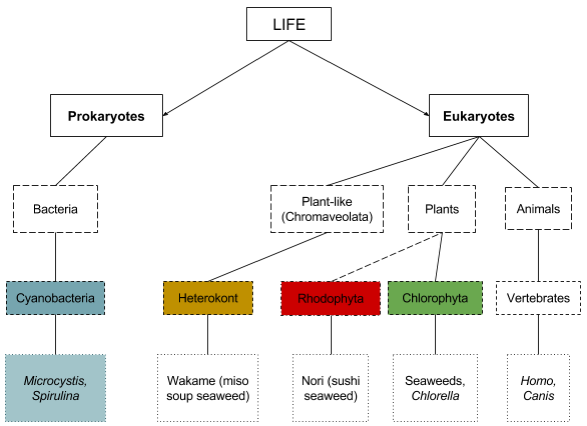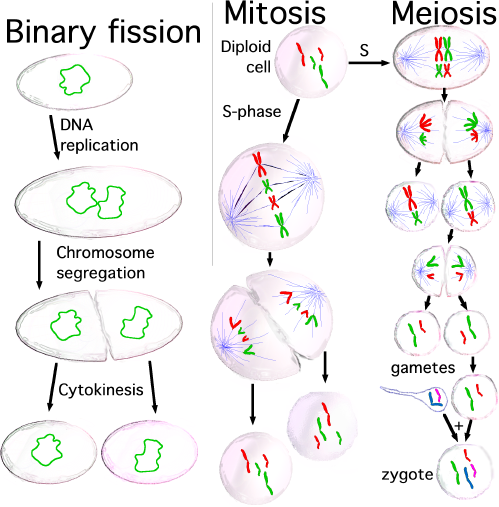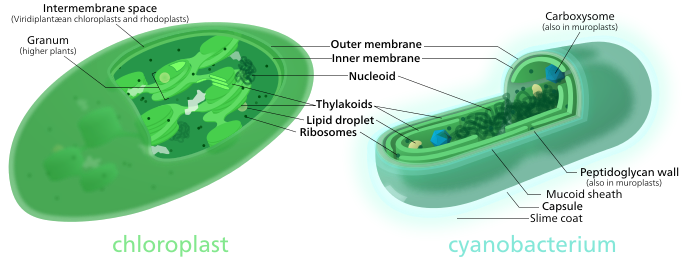
A simplified tree of life (with the genera for humans and dogs listed as examples) is shown as a reference.
Cyanobacteria are unlike algae, plants and animals in that they are prokaryotes (simple, single-celled organisms containing no organelles). They can be toxic (Microcystis), or non-toxic (Spirulina).[1]
True Algae, as described below are Eukaryotes like animals and fungi. That means that they contain organelles like chloroplasts.[1]
Chlorophyta, or green algae, are true plants and consist of many species of multicellular seaweeds and other unicellular algae like Chlorella.[1]
Rhodophyta, or red algae, are sometimes considered plants, but there is much debate. Red algae have some things in common with plants and green algae, such as the ability to photosynthesize, but are distinct and are actually much simpler organisms.[1] A popular example is Nori, the seaweed used in sushi.
Chromalveolata consists of brown algae, golden algae, kelp and diatoms. Many of the kingdom’s members used to be considered plants, such as the kelps, but scientists have realized that they are distinct from plants.[2] Despite being a diverse group, they have more in common with each other than with plants. Wakame is a popular example, being a common ingredient in Miso soup.
Similarities between chloroplasts and cyanobacteria
This comparison of a Chloroplast and a Cyanobacterium shows many similarities and differences, and helps explain why cyanobacteria are so similar to algae. The similarities are clearly shown – the layout and structure of both are alike, especially the nucleoids, ribosomes, and the double membranes.
Difference between cell types
This diagram shows the difference between eukaryotic cells like plants and animals and a prokaryotic bacterium. The various organelles (specialized parts of the cell contained in separate membranes, similar to the specialized organs inside an animal) can be clearly seen in the animal and plants cells, and while the cells are quite different from each other they are both clearly very different from the bacterium, which contains no organelles at all.
It should be noted that all the cell diagrams above are generalized. All algae will have cells that look something like the plant cell model, but with tremendous variation. Cyanobacteria look something like the bacteria model, but will be varied and different. And of course not all animal cells will have the same exact structure either.
Replication differences

Credit to Wikipedia
Above illustration shows the different ways organisms grow and reproduce.
Prokaryotes, including Cyanobacteria, divide using binary fission to create clones. This is a simple process, as prokaryotes are simple organisms. Without organelles to organize the interior, dividing up and splitting the circular chromosome is simple.
Eukaryotes, including true algae and humans, use mitosis and meiosis.
Mitosis is used by multicellular organisms to grow and repair, and by unicellular or asexual organisms to reproduce. While similar to binary fission, mitosis is a more complex division process as eukaryote DNA is organized within the nucleus of the cell. The exact details of the process differ between organisms.
Meiosis is used in sexual reproduction by all multicellular organisms and some unicellular organisms. It shares some general similarities with mitosis, but the ultimate goal is four unique cells as opposed to two identical ones. Meiosis has two parts, each of which goes through phases similar to those in mitosis. The end result is the gametes, which combine to make a zygote during sexual reproduction.
Go back to the basic biology

